- R.A
- information
- 8792 views
- 1 comments
Iranian poets and Persian literature have a rich and illustrious tradition, boasting some of the world's most influential and beloved poets. From ancient times to the present day, Persian poets have captivated audiences with their profound wisdom, exquisite imagery, and timeless themes. Their poetry reflects the unique cultural, historical, and spiritual tapestry of the Persian-speaking world.
The literature of any culture reflects its people's shared values and concerns: a personal narrative of the collective experience of being human. The poet expresses what others feel—often without being aware of what they long for, even if they were unaware of it until they read the artist's words. The literature worldwide is full of these values and common concerns among all humans, and Iranian literature has also had a remarkable shine in its heart. As an ancient civilization, Iran is full of great Persian poets, researchers, beautiful handicrafts, and cultural treasures dating back over ten thousand years. Persian literature, especially poetry, establishes a unique link between daily human life and the world, continuously from its inception to the artists who are now carrying it forward. This article introduces five of Iran's greatest poets who have shaped its history.
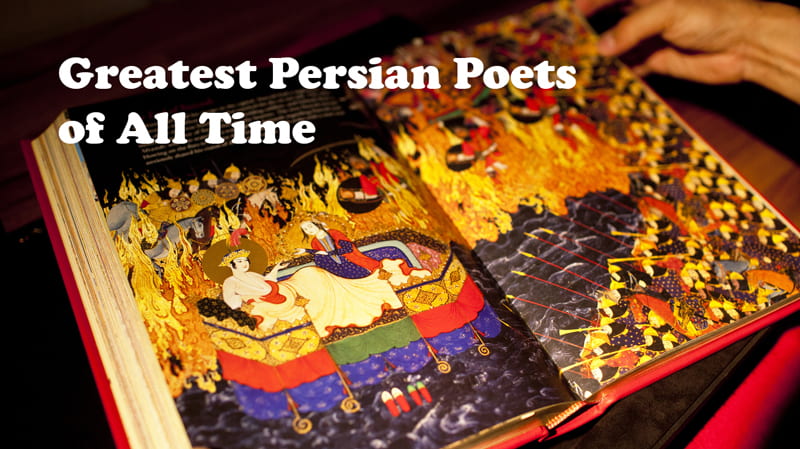
Omar Khayyam: One of the Best Persian Poets
It is interesting to know that Omar Khayyam is the most famous Iranian poet, whose poems are popular worldwide. As a poet, mathematician, philosopher, and astronomer, Khayyam should be called omniscient.
In 1859, the renowned English writer and poet Edward Fitzgerald translated Khayyam's quatrains for the first time. This momentous endeavor propelled Khayyam's works to worldwide acclaim, solidifying his position as a globally recognized literary figure.
After this translation, Khayyam's quatrains were reprinted many times in England and America. People welcomed these translations so much that, according to the English poet "Fitzgerald," There was no house in England and America without Khayyam's quatrains.
Cyrus Crafts; Luxury & Unique Products
Omar Khayyam's poems were translated into all the languages of the world. Thousands of articles, hundreds of books, and a couple of movies were made about him. This fame of Khayyam in Europe reached the point where about 40 of his quatrains became proverbs in Europe. And in Arab countries, 59 prose and verse translations of Khayyam's quatrains have been published.
Also, it is interesting to know that Khayyam's world fame is due to a limited number of four-stanza poems called Rubaʿi. Khayyam leaves only 100 quatrains, but hundreds of quatrains have been written in Khayyam's name and attributed to him.
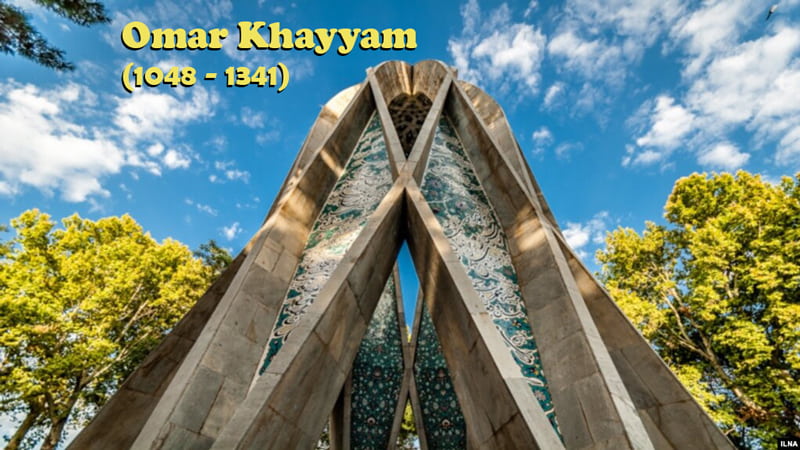
Rumi: A Talented Poet
Rumi is considered not only one of the greatest poets in Persian literature but also among the most influential and famous artists in the world.
Rumi also known as Jalāl al-Dīn Muḥammad Balkhī. He was a multilingual researcher, jurist, and scientist until he met "Shams Tabrizi" in 1244 AD (623 AD). After that, he became the most famous Iranian poet. He became a mystic of his age. He was born into a literate family, received a good education, learned several languages (Persian, Arabic, Greek, and Turkish), and traveled extensively. According to one of the legendary accounts, Rumi met Attar of Nishapur at the age of eighteen, and Attar, who noticed the truth-seeking spirit of the young man, gave him one of his books. This meeting created the foundation for the spiritual awakening of "Maulana" in the following years. After meeting with Rumi, Shams became his best friend and spiritual mentor. They were together for four years until "Shams" left one night, and no one saw him again.
After this incident, Rumi began to search for his friend. Still, then he realized that his spiritual bond with "Shams" was too strong to be destroyed by death or any physical distance, and the life force He felt "Shams" in himself.
As a result, Rumi started to create poems dedicated to Shams. This great Persian poet’s literary skill and mystical vision were so vast that he was addressed with the nickname "Maulana," which means "our teacher."
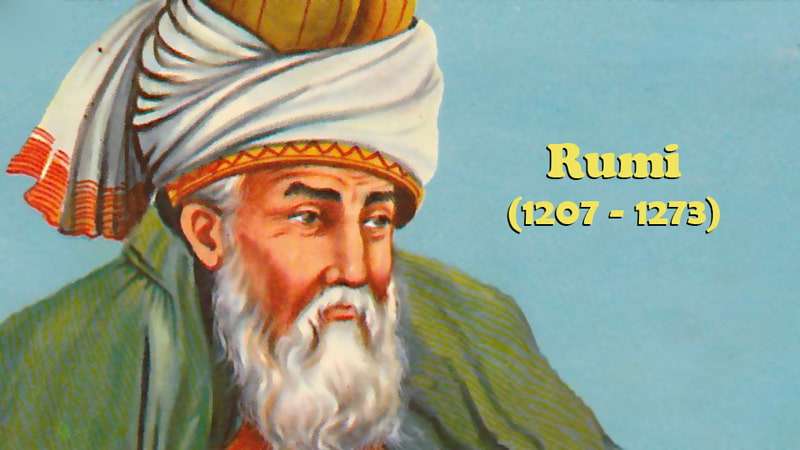
What is Rumi's most famous poem?
Rumi's most well-known work is the book "Mathnawi": a poetic exploration of the Relationship between the Individual and God, which includes many references from indigenous stories, Sufism, the Qur'an, Muslim narratives, and other literary and historical sources. And religion can be seen in it. His shorter works also use these references, combining native stories and Qur'anic allusions with a narrative voice that directly addresses the audience, aiming to engage the audience fully with his subject.
Ferdowsi: A Brilliant Persian Poet
Ferdowsi is known as one of the brilliant Persian poets. He knew the name of Abul-Qâsem Ferdowsi Tusi. He belonged to the class of "peasants,"; The class of landowners and wealthy people in society who were similar to feudal lords in Europe. There is almost no reliable information about Ferdowsi's life, except that he was educated, married, and had a daughter (although there is an elegy in Shahnameh for a son who predeceased him).
Why did Ferdowsi write the Shahnameh?
After Daghighi was killed, Ferdowsi took the responsibility of writing the Shahnameh, the book of Kings or epic of greater Iran for Amir Mansour. Still, the Samanid dynasty left power shortly after, and the Ghaznavids took their place. A dynasty that did not value Persian literature as much as the Samanid empire.
However, Ferdowsi continued to write Shahnameh and completed it. There are still many discussions about what reactions "Shahnameh" provoked and how much reward "Ferdowsi" received from "Ghaznavids" because the descriptions of this story are mixed mainly with legends. Whatever the first reactions to "Shahnameh" were, this work has been viral. Other possible works of Ferdowsi have yet to be recovered. Still, the national epic of greater "Shahnameh," a description of the history, legends, and native stories of ancient Iran from the beginning of time to the conquest of Iran by Muslims, has long been regarded as one of the great masterpieces in literature. The world is considered and called "Iran's National Epic."
Note: Daghighi is an Iranian poet, and Amir Mansour is the king of the Ghaznavids' empire.
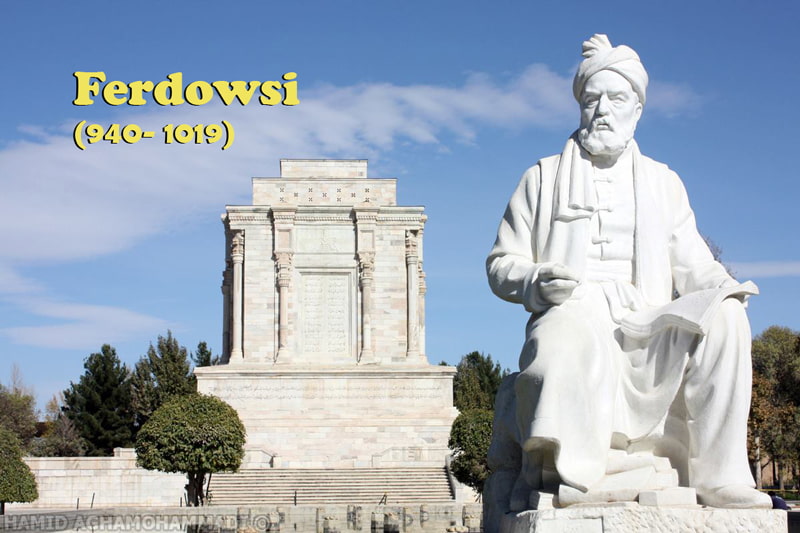
Hafez: Why did Hafiz become Famous among other Poets?
Hafiz was born in Shiraz and probably in an educated family. He is the most famous Iranian poet for his lovely and romantic poems. Hafiz is known as one of the most prominent Iranian poets of all ages due to his unique insights and profound spiritual messages. The works of all the Iranian poets inspired him mentioned above, especially "Sanaei," "Attar," "Rumi," and, of course, "Nizami," who considered love to be the principal value in human existence. It is said that Hafiz memorized the Qur'an and used the mysticism of "Sufism" as a tool to know the "Beloved" (God).
Hafiz, following "Sanaei," used the symbol of wine as the bewildering effect of God's love on the "seeker of truth" and on the concept of reaching individual and mystical union with God through self-knowledge, self-control, and patience in facing difficulties emphasized.
Where is Hafiz buried?
Hafiz was recognized as the most prominent Iranian poet of his generation, and a magnificent mausoleum was built after he died in Shiraz. This tomb was renovated and rearranged about a hundred years ago and still hosts countless fans of this great Iranian poet. Tourists can also visit Persepolis, another beautiful and famous place in Shiraz.
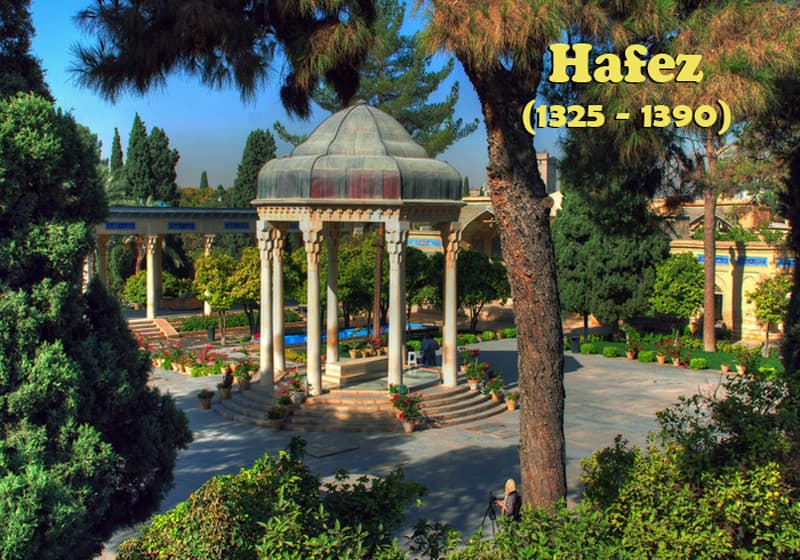
Saadi : A Famous Persian Poet
Saadi was born into a religious family in Shiraz. He had to leave home at a young age due to the Mongols' attack on his hometown. His life and philosophy in the following years were strongly affected by this event and the almost continuous wars that devastated that region. Saadi is known as a skillful Persian poet with profound spiritual messages. Still, he can also be considered a "travel writer" and "historian" because he spent most of his life traveling. He wrote about his travel experiences and directly dealt with historical references in his works. It is clear that Saadi had benefited from a considerable education and had probably studied at the University of Baghdad before traveling to Syria, Egypt, Arabia, and India.
During his travels, Saadi avoided the court of the rich and academic circles and preferred to associate with ordinary people, especially people who had lost their homes and lives. During the Mongol invasion and the battles between Muslims and Christians, he returned to Shiraz in 1257 AD (635 AD) and started writing. Saadi is known above all for the creation of two books, "Gulistan" and "Bustan,"; Two works that explore the importance of moral virtues in a person's life and make numerous references to the mysticism of "Sufism" to understand divine issues.
CyrusCrafts’ last Thought about Famous Iranian Poets
A significant element of Iranian culture is Persian literature. It has also profoundly impacted Muslim culture in the Middle East. Several Iranian writers and poets have earned a reputation worldwide and in West Asia. Even though Rumi has undoubtedly made Persian poetry famous worldwide, more poets have been recognized in Iran throughout history, including Omar Khayyam, Ferdowsi, Hafiz, Saadi, and others.








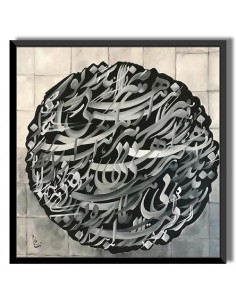

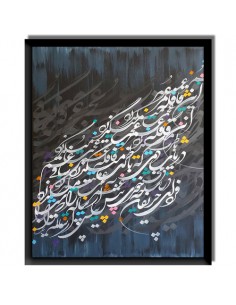

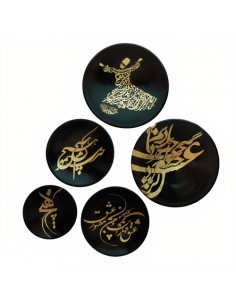

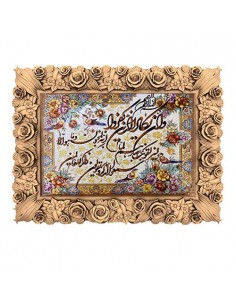



Comments (1)